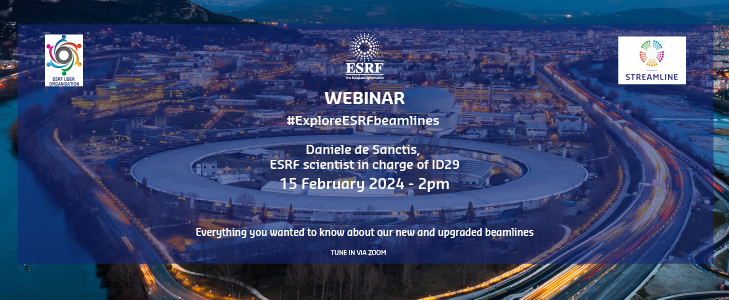EXPLORE ESRF BEAMLINES - ID29 Time-Resolved Macromolecular Crystallography Beamline - Daniele de Sanctis

ID29 Time-Resolved Macromolecular Crystallography Beamline,
ESRF Scientist in charge of ID29 - Daniele de Sanctis
ABSTRACT
Fourth generation synchrotron sources create new opportunities for expanding the research in structural biology and in protein crystallography in particular. The ESRF Extremely Brilliant Source upgrade programme was completed with the construction of the new ID29, the first world beamline completely dedicated to room temperature experiments and time resolved macromolecular serial crystallography. The beamline presents a new layout in terms of design and experimental setup was designed to fully profit from the characteristics of the EBS machine with the aim to collect diffraction data from micrometer sized crystalline samples at room temperature with a microsecond time resolution. The beamline presents a flexible sample environment that can accommodate fixed target, viscous injectors, microfluidics or tape drive. The experimental setup is completed with a Jungfrau 4M detector that has been integrated in the ESRF data acquisition pipeline and can be operated at high data acquisition rate. The first year of operation showed how the high repetition rate and the wide bandwidth result in an optimal hit rate, regardless of the sample delivery method selected, with a extremely high percentage of successfully indexed diffraction pattern. Moreover, the pulsed beam, produced by the chopper system, besides allowing for time-resolved experiments, mitigate the radiation damage effects which would be produced by continuous exposure. The first results revealed new perspectives for serial crystallography in the micro-to-millisecond time resolution across future 4th generation sources that are under development worldwide. In this presentation we will report from some of the first experiments that took place in this initial year of operation of ID29.
TO WATCH THE REPLAY OF THE WEBINAR, PLEASE CLICK ON THIS LINK



